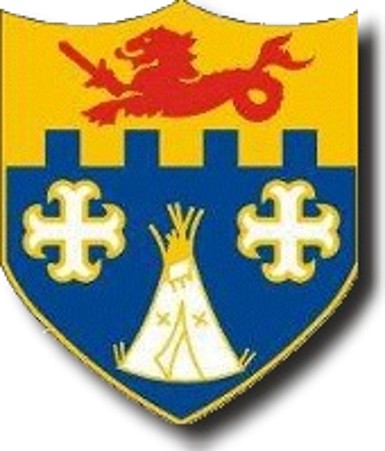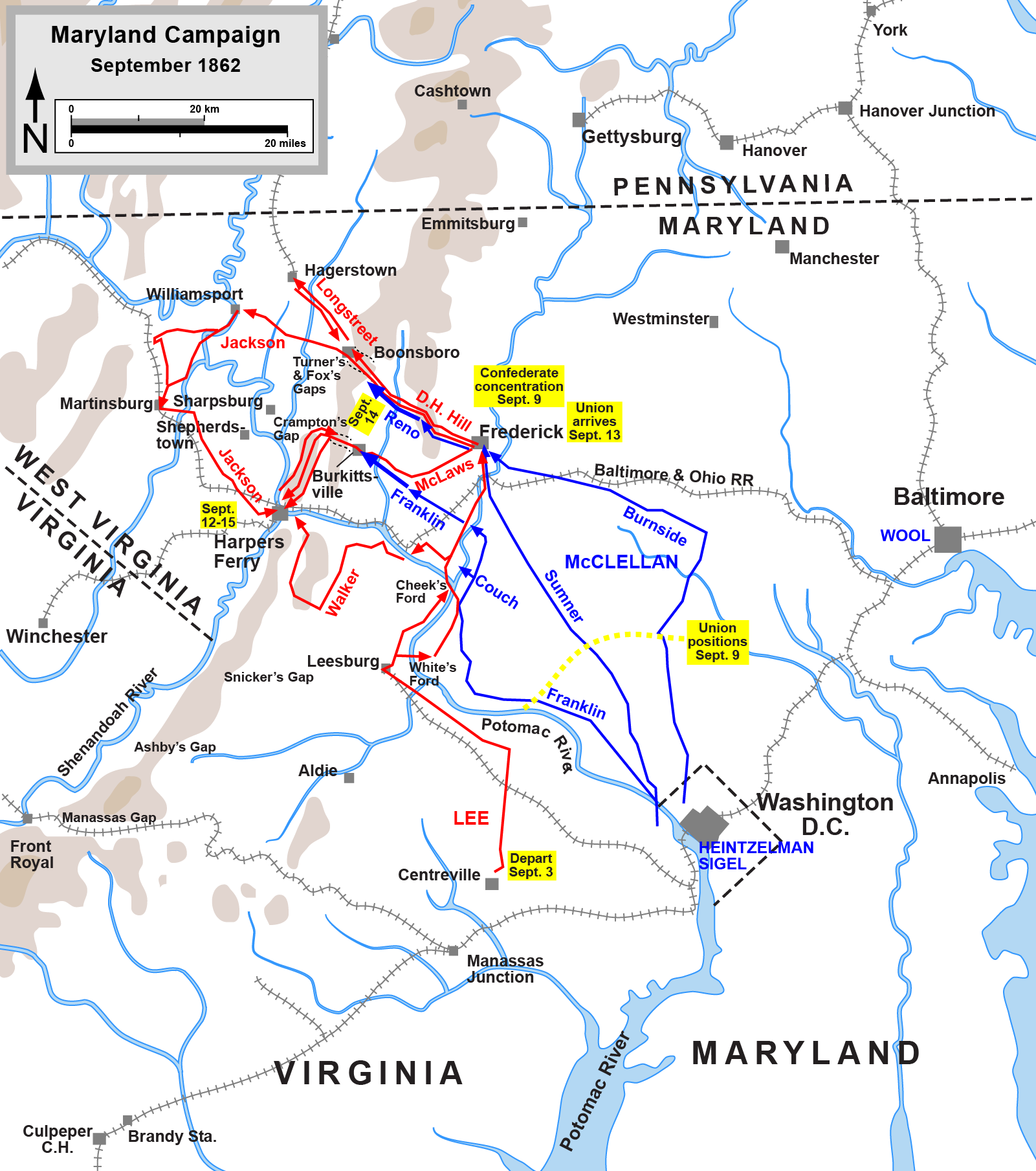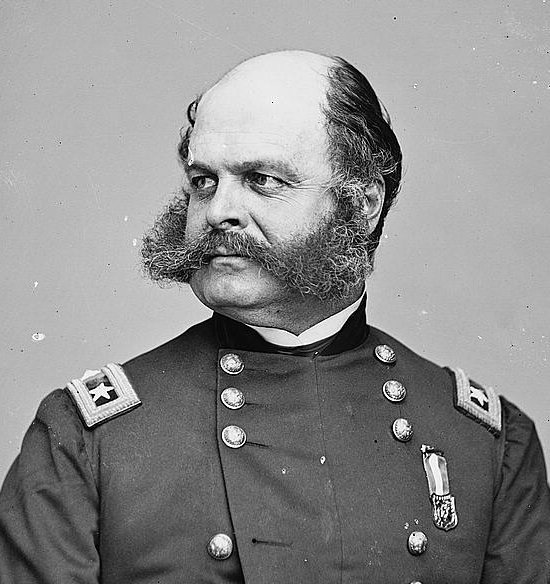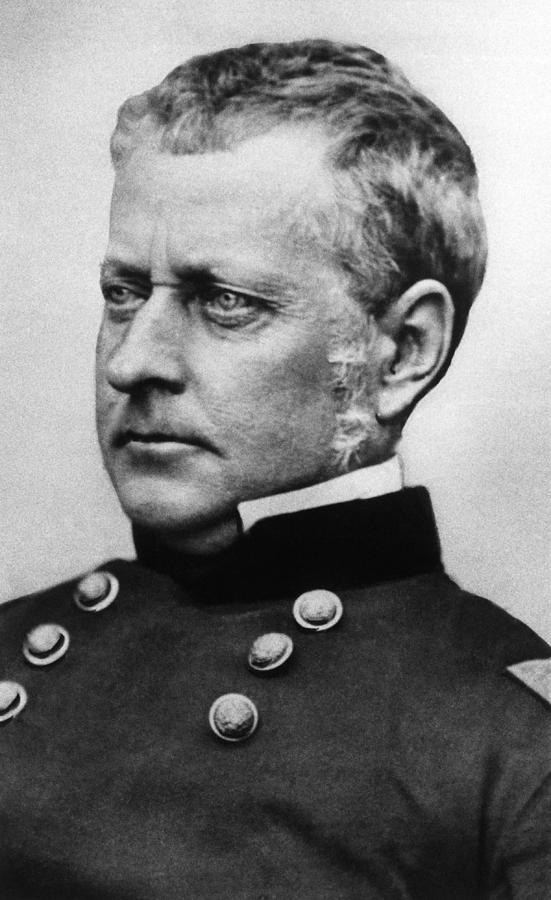FRIDAY PREVIEW
This day is a free day for touring in the area. Some will be
remaining in the Baltimore area and take in the sights that are close by. I
discovered a website that may be helpful. It features a map with thumbnail
photos of the attractions that can be clicked on bringing you to a description
of the attraction. You can get to it, by clicking on this link
IMMEDIATE AREA ATTRACTIONS
I'm going to post a lot of
information below that may be of no interest to you unless you're interested in
the Civil War battle sites in the area. If that's the case, I am giving you a
link that will bypass the battlefield stories. Clicking on the link below will
get you to the time when we will be arriving for the beginning of the official
reunion when we gather for dinner. Click the link below below to get
there:
SPARE ME THE
HISTORY, PALEEZ!
Others will be
carpooling to civil war battlefield sites in nearby Sharpsburg, MD and
Gettysburg, PA. Each battlefield can be reached after a 1 ½ hour car trip. I
will be going to the Antietam battleground, while Norm Smith is leading a group
going to Gettysburg. We will be carpooling so be sure to check in with us to
coordinate that movement. Both battlegrounds can easily be reached and properly
enjoyed and get us back for 6PM dinner when the official reunion begins with
dinner.
The Battle of Sharpsburg, more widely known as the Battle of
Antietam took place on Sept. 17, 1862 a month after the end of the Peninsula
Campaign, when Union forces sent an army into Virginia. It was during this
campaign that the 12th Infantry attained military glory holding back
Confederate forces bent on destroying or capturing the entire Union Army. The
time that they bought for the Union forces saved it from destruction. The Battle
is known as the Battle of Gaines' Mills.
 This was the
first combat action for our regiment of the Civil War, its greatest achievement
took place at Gaines' Mills, Virginia, where it lost nearly 50% of its
personnel. This is shown by the Moline crosses on our unit crest, representing
the iron fastening of a mill stone. The fact that they are paired recalls the
crushing losses sustained.
This was the
first combat action for our regiment of the Civil War, its greatest achievement
took place at Gaines' Mills, Virginia, where it lost nearly 50% of its
personnel. This is shown by the Moline crosses on our unit crest, representing
the iron fastening of a mill stone. The fact that they are paired recalls the
crushing losses sustained.
 After
the battle the Union army returned to Washington DC to regroup. Before very long
they mounted a second invasion into Virginia, with the mission of controlling
the Shenandoah Valley, the bread basket of the Confederacy. That incursion went
badly ending at the Second Battle Of Bull Run. With Union forces, once
more on the run, Lee was emboldened to initiate his own invasion into enemy
territory. Maryland was a pro slavery state and Lee thought that this invasion
may encourage the state to come over to the Confederacy. It never happened.
After
the battle the Union army returned to Washington DC to regroup. Before very long
they mounted a second invasion into Virginia, with the mission of controlling
the Shenandoah Valley, the bread basket of the Confederacy. That incursion went
badly ending at the Second Battle Of Bull Run. With Union forces, once
more on the run, Lee was emboldened to initiate his own invasion into enemy
territory. Maryland was a pro slavery state and Lee thought that this invasion
may encourage the state to come over to the Confederacy. It never happened.
Within days two major battles took place, the conquest of
Harper’s Ferry and then the Battle of South Mountain took place. The 23rd
Ohio Infantry fought in the latter battle. It was commanded by Rutherford B
Hayes, and William McKinley was a commissary sergeant in the unit. Both would
later be elected President of the United States, twenty years apart (1877 and
1897). Both later participated in the Battle of Antietam.
Finally, the two main body forces clashed in an all day battle
just outside of Sharpsburg, MD near the Antietam Creek. Lee outnumbered 2-1 sent
his entire force into the battle while McClellan, engaged 3/4 of his entire army
into the battle. Not surprisingly, the casualties became horrendous. In fact,
the battle produced the highest casualties of any one day battle fought on
American soil in American history. The casualties totaled 2,108
Union soldiers killed and 9,549 wounded -- 2,700 Confederates were killed and
9,029 wounded.
Although fought to a draw, Lee was able to save his army from annihilation and
they were allowed to return to Virginia by the over cautious McClellan. It would
be almost a year before Lee felt confident to venture into union territory.
Although not a resounding union victory, Lee was forced back into
Virginia. That provided Lincoln with enough of a victory to embolden him to
announce his Preliminary Emancipation Proclamation. This was significant because
it discouraged the British and French from recognizing the confederate nation,
who were near to recognizing the rebel nation.

According to an excerpt from the early history of our regiment in the book, THE
HISTORY OF THE 12TH INFANTRY REGIMENT IN WORLD WAR II, our regiment
was
responsible for security for the General Headquarters of the Union
forces during the period leading up to the battle. Once the battle began the 12th
held a vital point in securing the artillery that supported the infantry
charges. Despite repeated assaults by the rebels, the position held and the
artillery devastated the Confederate forces in that battle.
To learn more about
the battle and information on visiting the historic battle field click here:
BATTLE OF ANTIETAM
 Remember
those many months where the Confederate forces in Virginia prepared to reinvade
the n
Remember
those many months where the Confederate forces in Virginia prepared to reinvade
the n orth?
They were busy destroying the careers of Generals McClellan, Burnside, shown
left, (who established the sideburn craze then and in the 1960 and 70s by his
distinctive hairstyle and Hooker, shown right, (yes, the man who established the
hooker connotation for ladies of ill repute, through his reputation for visiting
many of the brothels in the Washington DC area) for who were all unsuccessful in
checking rebel raids into the north. It all came to a head on December 11-15,
1862. That was when the Union army was defeated at Fredericksburg Virginia.
The Union army suffered 12,653 casualties (1,284 killed, 9,600 wounded, 1,769
captured/missing). The Confederate army lost 5,377 (608 killed, 4,116 wounded,
653 captured/missing but at the end of the day the Confederacy successfully
repelled the attack.
orth?
They were busy destroying the careers of Generals McClellan, Burnside, shown
left, (who established the sideburn craze then and in the 1960 and 70s by his
distinctive hairstyle and Hooker, shown right, (yes, the man who established the
hooker connotation for ladies of ill repute, through his reputation for visiting
many of the brothels in the Washington DC area) for who were all unsuccessful in
checking rebel raids into the north. It all came to a head on December 11-15,
1862. That was when the Union army was defeated at Fredericksburg Virginia.
The Union army suffered 12,653 casualties (1,284 killed, 9,600 wounded, 1,769
captured/missing). The Confederate army lost 5,377 (608 killed, 4,116 wounded,
653 captured/missing but at the end of the day the Confederacy successfully
repelled the attack.
In
January the Emancipation Proclamation was delivered In March the nation's first
Conscription Act was adopted. The north, suffering heavy losses, was forced into
drafting men to fill their ranks. It was widely considered a poor man's draft as
one could pay a fee to avoid service or he could pay a replacement to take his
place. Riots followed in New York.
In late April
the union army once more invaded Virginia in one more attempt to capture
Richmond, Virginia. The Battle of Chancellorsville resulted in that force
once more being repelled and sent running for its life.
 Confederate
General Lee decided to take the war to the enemy once more in mid June. On June
13, he defeated Union forces at Winchester, Virginia, and continued north to
Pennsylvania. General Hooker was replaced by General George Meade as Commander
of the Potomac.
Confederate
General Lee decided to take the war to the enemy once more in mid June. On June
13, he defeated Union forces at Winchester, Virginia, and continued north to
Pennsylvania. General Hooker was replaced by General George Meade as Commander
of the Potomac.
A cat and mouse game ensued
as Lee's cavalry was sent scouting and left Lee blind to the superior force that
was headed right at him. On July 1st as advancing Confederate troops were
preparing to enter Gettysburg, they ran into an advance cavalry party of the
Army of the Potomac led by Brigadier General John Buford. Believing the force to
be Pennsylvania militia men, the rebels attacked in force. The small cavalry
division deployed in an advantageous defensive position knowing that they would
be facing the bulk of Lee's army. Their hope was pinned to the currier sending
word back to Meade that they had found Lee's army and needed to come at once to
Gettysburg.
Thus began the Battle of
Gettysburg. It was known as the high water mark for the Confederacy and after
being forced back into Virginia, the south never was able to invade the north
for the duration of the war.
On the final day of the
battle the hopes of the confederacy depended in an all to charge into union
forces known as Pickett's Charge.
"Around
1 p.m., from 150 to 170 Confederate guns[55] began an artillery bombardment that
was probably the largest of the war. In order to save valuable ammunition for
the infantry attack that they knew would follow, the Army of the Potomac's
artillery, under the command of Brig. Gen. Henry Jackson Hunt, at first did
 not
return the enemy's fire. After waiting about 15 minutes, about 80 Federal
cannons added to the din. The Army of Northern Virginia was critically low on
artillery ammunition, and the cannonade did not significantly affect the Union
position. Around 3 p.m., the cannon fire subsided, and 12,500 Southern soldiers
stepped from the ridgeline and advanced the three-quarters of a mile (1,200 m)
to Cemetery Ridge in what is known to history as "Pickett's Charge". As the
Confederates approached, there was fierce flanking artillery fire from Union
positions on Cemetery Hill and north of Little Round Top, and musket and
canister fire from Hancock's II Corps. In the Union center, the commander of
artillery had held fire during the Confederate bombardment, leading Southern
commanders to believe the Northern cannon batteries had been knocked out.
However, they opened fire on the Confederate infantry during their approach with
devastating results. Nearly one half of the attackers did not return to their
own lines. Although the Federal line wavered and broke temporarily at a jog
called the "Angle" in a low stone fence, just north of a patch of vegetation
called the Copse of Trees, reinforcements rushed into the breach, and the
Confederate attack was repulsed."
not
return the enemy's fire. After waiting about 15 minutes, about 80 Federal
cannons added to the din. The Army of Northern Virginia was critically low on
artillery ammunition, and the cannonade did not significantly affect the Union
position. Around 3 p.m., the cannon fire subsided, and 12,500 Southern soldiers
stepped from the ridgeline and advanced the three-quarters of a mile (1,200 m)
to Cemetery Ridge in what is known to history as "Pickett's Charge". As the
Confederates approached, there was fierce flanking artillery fire from Union
positions on Cemetery Hill and north of Little Round Top, and musket and
canister fire from Hancock's II Corps. In the Union center, the commander of
artillery had held fire during the Confederate bombardment, leading Southern
commanders to believe the Northern cannon batteries had been knocked out.
However, they opened fire on the Confederate infantry during their approach with
devastating results. Nearly one half of the attackers did not return to their
own lines. Although the Federal line wavered and broke temporarily at a jog
called the "Angle" in a low stone fence, just north of a patch of vegetation
called the Copse of Trees, reinforcements rushed into the breach, and the
Confederate attack was repulsed."
(Source: Wikipedia)
The battle of Gettysburg was decided on that day.
General Lee understood the significance of the failure to break through Union
lines and immediately prepared to evacuate the remaining Confederate force.
When it was over,
between 46,000 and 51,000 soldiers from both armies were casualties in the
three-day battle. That November, President Lincoln used the dedication ceremony
for the Gettysburg National Cemetery to honor the fallen Union soldiers and
redefine the purpose of the war in his historic Gettysburg Address.
Today
the battle site is kept pretty much as it looked like when the battle took
place. When I visited the National site a few years back I was amazed at the
open country that the rebels had to traverse to reach that tree on Cemetery
Ridge, 3/4 of a mile away, all while suffering a blistering artillery attack
from their flank.
 According to an excerpt from the early history of our regiment in
the book, THE HISTORY OF THE 12TH INFANTRY REGIMENT IN WORLD WAR II,
our regiment was the first to seize and hold Little Round Top when Lee first
planned to flank the union forces.
According to an excerpt from the early history of our regiment in
the book, THE HISTORY OF THE 12TH INFANTRY REGIMENT IN WORLD WAR II,
our regiment was the first to seize and hold Little Round Top when Lee first
planned to flank the union forces.
To learn more about
the battle and information on visiting the historic battle field click here:
BATTLE OF GETTYSBURG
Oh, hello

Photo courtesy of Al Parsons
Officially, the reunion begins with an
assembly in the Banquet Hall for dinner which will take place at 6PM.
This is the menu that we will be having
for that meal
Soup, Salad and Pasta
Garden Salad
Minestrone Soup
Entree - Meat Lasagna and Veggie Lasagna
Served with garlic bread
ore coming so
Return to
Reunion Days Page
Return to
Reunion Info Links
 This was the
first combat action for our regiment of the Civil War, its greatest achievement
took place at Gaines' Mills, Virginia, where it lost nearly 50% of its
personnel. This is shown by the Moline crosses on our unit crest, representing
the iron fastening of a mill stone. The fact that they are paired recalls the
crushing losses sustained.
This was the
first combat action for our regiment of the Civil War, its greatest achievement
took place at Gaines' Mills, Virginia, where it lost nearly 50% of its
personnel. This is shown by the Moline crosses on our unit crest, representing
the iron fastening of a mill stone. The fact that they are paired recalls the
crushing losses sustained. After
the battle the Union army returned to Washington DC to regroup. Before very long
they mounted a second invasion into Virginia, with the mission of controlling
the Shenandoah Valley, the bread basket of the Confederacy. That incursion went
badly ending at the Second Battle Of Bull Run. With Union forces, once
more on the run, Lee was emboldened to initiate his own invasion into enemy
territory. Maryland was a pro slavery state and Lee thought that this invasion
may encourage the state to come over to the Confederacy. It never happened.
After
the battle the Union army returned to Washington DC to regroup. Before very long
they mounted a second invasion into Virginia, with the mission of controlling
the Shenandoah Valley, the bread basket of the Confederacy. That incursion went
badly ending at the Second Battle Of Bull Run. With Union forces, once
more on the run, Lee was emboldened to initiate his own invasion into enemy
territory. Maryland was a pro slavery state and Lee thought that this invasion
may encourage the state to come over to the Confederacy. It never happened. Remember
those many months where the Confederate forces in Virginia prepared to reinvade
the n
Remember
those many months where the Confederate forces in Virginia prepared to reinvade
the n orth?
They were busy destroying the careers of Generals McClellan, Burnside, shown
left, (who established the sideburn craze then and in the 1960 and 70s by his
distinctive hairstyle and Hooker, shown right, (yes, the man who established the
hooker connotation for ladies of ill repute, through his reputation for visiting
many of the brothels in the Washington DC area) for who were all unsuccessful in
checking rebel raids into the north. It all came to a head on December 11-15,
1862. That was when the Union army was defeated at Fredericksburg Virginia.
The Union army suffered 12,653 casualties (1,284 killed, 9,600 wounded, 1,769
captured/missing). The Confederate army lost 5,377 (608 killed, 4,116 wounded,
653 captured/missing but at the end of the day the Confederacy successfully
repelled the attack.
orth?
They were busy destroying the careers of Generals McClellan, Burnside, shown
left, (who established the sideburn craze then and in the 1960 and 70s by his
distinctive hairstyle and Hooker, shown right, (yes, the man who established the
hooker connotation for ladies of ill repute, through his reputation for visiting
many of the brothels in the Washington DC area) for who were all unsuccessful in
checking rebel raids into the north. It all came to a head on December 11-15,
1862. That was when the Union army was defeated at Fredericksburg Virginia.
The Union army suffered 12,653 casualties (1,284 killed, 9,600 wounded, 1,769
captured/missing). The Confederate army lost 5,377 (608 killed, 4,116 wounded,
653 captured/missing but at the end of the day the Confederacy successfully
repelled the attack.  Confederate
General Lee decided to take the war to the enemy once more in mid June. On June
13, he defeated Union forces at Winchester, Virginia, and continued north to
Pennsylvania. General Hooker was replaced by General George Meade as Commander
of the Potomac.
Confederate
General Lee decided to take the war to the enemy once more in mid June. On June
13, he defeated Union forces at Winchester, Virginia, and continued north to
Pennsylvania. General Hooker was replaced by General George Meade as Commander
of the Potomac.  not
return the enemy's fire. After waiting about 15 minutes, about 80 Federal
cannons added to the din. The Army of Northern Virginia was critically low on
artillery ammunition, and the cannonade did not significantly affect the Union
position. Around 3 p.m., the cannon fire subsided, and 12,500 Southern soldiers
stepped from the ridgeline and advanced the three-quarters of a mile (1,200 m)
to Cemetery Ridge in what is known to history as "Pickett's Charge". As the
Confederates approached, there was fierce flanking artillery fire from Union
positions on Cemetery Hill and north of Little Round Top, and musket and
canister fire from Hancock's II Corps. In the Union center, the commander of
artillery had held fire during the Confederate bombardment, leading Southern
commanders to believe the Northern cannon batteries had been knocked out.
However, they opened fire on the Confederate infantry during their approach with
devastating results. Nearly one half of the attackers did not return to their
own lines. Although the Federal line wavered and broke temporarily at a jog
called the "Angle" in a low stone fence, just north of a patch of vegetation
called the Copse of Trees, reinforcements rushed into the breach, and the
Confederate attack was repulsed."
not
return the enemy's fire. After waiting about 15 minutes, about 80 Federal
cannons added to the din. The Army of Northern Virginia was critically low on
artillery ammunition, and the cannonade did not significantly affect the Union
position. Around 3 p.m., the cannon fire subsided, and 12,500 Southern soldiers
stepped from the ridgeline and advanced the three-quarters of a mile (1,200 m)
to Cemetery Ridge in what is known to history as "Pickett's Charge". As the
Confederates approached, there was fierce flanking artillery fire from Union
positions on Cemetery Hill and north of Little Round Top, and musket and
canister fire from Hancock's II Corps. In the Union center, the commander of
artillery had held fire during the Confederate bombardment, leading Southern
commanders to believe the Northern cannon batteries had been knocked out.
However, they opened fire on the Confederate infantry during their approach with
devastating results. Nearly one half of the attackers did not return to their
own lines. Although the Federal line wavered and broke temporarily at a jog
called the "Angle" in a low stone fence, just north of a patch of vegetation
called the Copse of Trees, reinforcements rushed into the breach, and the
Confederate attack was repulsed." 
